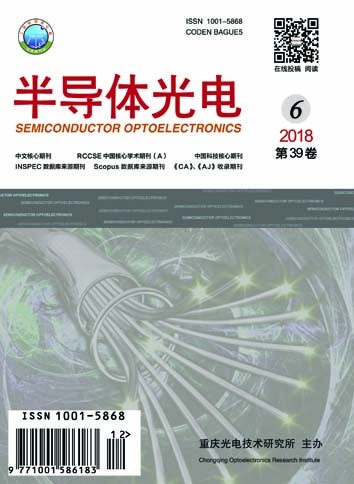半导体光电, 2018, 39 (6): 858, 网络出版: 2019-01-10
基于可见光的自适应混合蛙跳定位算法
Adaptive Shuffled Frog Leaping Location Algorithm Based on Visible Light Communication
室内定位 可见光通信 最小二乘算法 自适应混合蛙跳算法 indoor location visible light communication TOA TOA least squares algorithm adaptive shuffled frog leaping algorithm
摘要
可见光通信具有绿色、节能、成本低等优点, 比较适合应用于室内定位。提出一种基于可见光通信的自适应混合蛙跳室内定位算法, 该算法通过到达时间(TOA)算法和最小二乘算法进行初始定位, 得到未知定位点的估计位置解集, 再利用自适应混合蛙跳算法搜索未知定位点的最优位置。该算法具有较强的全局搜索能力, 不易陷入局部最优, 能够得到较高精度的定位结果。仿真结果表明, 该算法比传统TOA定位算法的定位误差小, 说明该算法提高了室内定位的精度。
Abstract
Owing to its advantages of green, energy saving, low cost and so on, visible light communication is very suitable for indoor location. In this paper, it proposes an adaptive shuffled frog leaping indoor location algorithm was proposed based on visible light communication. The algorithm uses the TOA algorithm and the least squares algorithm to make initial location, so as to obtain the estimated location set of the unknown locating points. And then, it uses the adaptive shuffled leaping algorithm to search the optimal location of the unknown locating points. The algorithm has strong global search ability, and it is easy to fall into local optimum, thus it can obtain high location accuracy. Simulation results show that the localization error of the proposed algorithm is smaller than that of the traditional TOA algorithm, which indicates that it has improved the accuracy of indoor location.
陈爽, 金嘉诚, 张月霞. 基于可见光的自适应混合蛙跳定位算法[J]. 半导体光电, 2018, 39(6): 858. CHEN Shuang, JIN Jiacheng, ZHANG Yuexia. Adaptive Shuffled Frog Leaping Location Algorithm Based on Visible Light Communication[J]. Semiconductor Optoelectronics, 2018, 39(6): 858.



